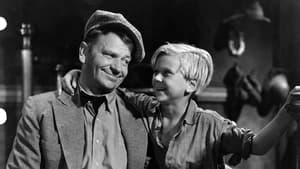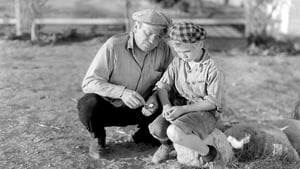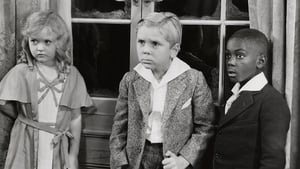Contact: info@alwanfilm.com
Video Sources 0 Views

Synopsis
The Champ 1931 Colorized Review: A Heartfelt Drama Revisited

Introduction
In the early 1930s, cinema was undergoing a significant transformation, embracing both technological innovations and emotional storytelling. Among the standout films of this era is The Champ (1931), a poignant drama directed by King Vidor. This film, notable for its powerful performances and evocative narrative, remains a cornerstone of early sound cinema. In this review, we will explore the impact of The Champ (1931), examining its significance in the context of film history, the effectiveness of its performances, and the enduring legacy of its story.
Check The Full Colorized Movies List
Check Our Colorized Movies Trailer Channel
Understanding The Champ 1931 Colorized: Director, Cast, and Genre
Director’s Vision
King Vidor, a director celebrated for his ability to evoke deep emotions and create visually compelling narratives, directed The Champ (1931). Vidor’s vision for the film was to create a moving portrait of a fallen boxing champion and his son, exploring themes of redemption, love, and sacrifice. Vidor’s direction emphasizes the emotional core of the story, using the film’s intimate setting and close-up shots to capture the nuances of the characters’ relationships.
The Iconic Performance of Actors
The cast of The Champ (1931) delivers unforgettable performances, with Wallace Beery and Jackie Cooper at the forefront. Beery, playing the titular character, delivers a tour-de-force performance as a once-great boxer struggling with personal demons. His portrayal of the Champ is both gritty and tender, capturing the character’s flaws and humanity.
Jackie Cooper, as the Champ’s young son, delivers a remarkably mature performance for his age. Cooper’s portrayal of a child who adores his father and is deeply affected by his struggles adds a layer of emotional depth to the film. The chemistry between Beery and Cooper is central to the film’s impact, making their performances some of the most memorable in early cinema.
Exploring the Genre
The Champ (1931) falls within the drama genre, a category that emphasizes character development and emotional storytelling. The film’s focus on the personal and emotional struggles of its characters, particularly the relationship between the Champ and his son, aligns with the genre’s conventions. The Champ also incorporates elements of sports drama, highlighting the challenges and triumphs associated with boxing.
Exploring the World of The Champ 1931 Colorized: Plot and Characters
Detailed Synopsis
The Champ (1931) follows the story of a once-prominent boxer, known simply as the Champ, who is now struggling with the aftermath of his career and personal life. The film opens with the Champ, played by Wallace Beery, living a life of poverty and regret. Despite his past glory, he is now a washed-up fighter, trying to make a living through low-stakes matches.
The Champ’s son, Dink (played by Jackie Cooper), is his greatest source of joy and motivation. The film portrays their deep bond and the Champ’s desire to provide a better life for Dink. However, the Champ’s past failures and current struggles create significant challenges for their relationship.
Key moments in the film include the Champ’s attempts to make a comeback, his interactions with Dink, and the eventual confrontation with his own limitations and failures. The film’s climax is both heart-wrenching and poignant, highlighting the depth of the Champ’s love for his son and the sacrifices he is willing to make.
The Complex Protagonist and Memorable Supporting Characters
The Champ, as portrayed by Wallace Beery, is a complex character with both admirable qualities and significant flaws. His determination and love for his son are juxtaposed with his struggles and mistakes, creating a multi-dimensional protagonist. Supporting characters, including the Champ’s estranged wife and various figures from his past, add depth to the story and contribute to the film’s emotional impact.
The Art of Early Sound Cinema
The Transition to Sound
The early 1930s marked a significant period in cinema history with the transition from silent films to sound. This shift, known as the advent of “talkies,” revolutionized filmmaking and storytelling. Early sound films, like The Champ (1931), faced challenges related to sound recording and synchronization but also offered new opportunities for enhanced storytelling through dialogue and sound effects.
Technical and Artistic Innovations
The Champ (1931) showcases the technical and artistic innovations of early sound cinema. The film’s use of dialogue, combined with its strong performances and emotional depth, highlights the potential of sound to enhance the storytelling experience. King Vidor’s direction and the actors’ performances are integral to the film’s success in this new cinematic era.
Early Sound Films: A Brief History
The Emergence of Sound Technology
The transition to sound in cinema began with the introduction of the Vitaphone system, which synchronized sound with film images. Early sound films faced technical challenges, including issues with sound quality and recording. Despite these challenges, the success of sound films quickly led to widespread adoption of the technology.
The Champ (1931) is a notable example of early sound cinema, demonstrating the potential of sound to enhance emotional storytelling and character development. The film’s success helped pave the way for future innovations in sound technology and filmmaking.
The Champ 1931 and Its Impact on Early Sound Cinema
Significance of the Film
The Champ (1931) holds a significant place in the history of early sound cinema. The film’s powerful performances, emotional narrative, and innovative use of sound contribute to its enduring legacy. As one of the early examples of sound films that effectively combined dialogue with compelling storytelling, The Champ serves as an important milestone in the evolution of cinema.
Influence on Future Films
The success of The Champ (1931) influenced subsequent films and filmmakers, demonstrating the potential of sound to enhance dramatic storytelling. The film’s focus on character development and emotional depth set a precedent for future films in the drama genre. Its impact on early sound cinema can be seen in the works of later filmmakers who embraced and expanded upon the techniques introduced by The Champ.
The Debate Over Early Sound Films
Controversy Surrounding Sound Technology
The transition to sound cinema was not without controversy. Critics and traditionalists initially questioned the effectiveness of sound technology and its impact on the artistic qualities of film. Some argued that sound could detract from the visual elements of cinema and limit creative expression.
Proponents of sound technology, however, argued that it offered new opportunities for storytelling and audience engagement. The success of films like The Champ (1931) helped to address these concerns, demonstrating that sound could enhance the cinematic experience without compromising artistic integrity.
Examining The Champ 1931 as an Early Sound Film
Enhancement or Distraction?
The use of sound in The Champ (1931) adds a layer of emotional depth to the film, enhancing the viewing experience. The dialogue and sound effects contribute to the film’s overall impact, allowing for a more immersive and engaging story. However, some viewers may find that the early sound technology, with its technical limitations, affects the film’s overall quality.
Ultimately, the effectiveness of sound in The Champ depends on individual preferences and expectations. The film’s ability to balance sound with compelling storytelling highlights the potential of early sound cinema to create powerful and memorable experiences.
Influence and Legacy: The Champ 1931 Colorized’s Impact on Cinema
The Drama Genre and Beyond
The Champ (1931) had a lasting impact on the drama genre, influencing subsequent films and filmmakers. The film’s focus on emotional storytelling, character development, and the use of sound set a standard for future dramas. The legacy of The Champ can be seen in the works of later filmmakers who embraced and expanded upon the techniques introduced by the film.
The Film’s Enduring Appeal
The enduring appeal of The Champ (1931) lies in its ability to connect with audiences on a deeply emotional level. The film’s powerful performances and moving narrative continue to resonate with viewers, making it a timeless classic in early sound cinema.
Director’s Cinematic Legacy: Beyond The Champ 1931 Colorized
King Vidor’s Influence
King Vidor’s career extended far beyond The Champ (1931), encompassing a wide range of films that showcased his versatility and creativity. Vidor is known for his work on classics such as The Big Parade (1925) and Stella Dallas (1937), both of which further cemented his reputation as a masterful storyteller.
Vidor’s influence on filmmaking is evident in his innovative techniques and his ability to bring complex characters and stories to life. His work continues to be celebrated for its artistic achievements and its impact on the evolution of cinema.
Themes Explored in The Champ 1931 Colorized
Redemption, Love, and Sacrifice
The Champ (1931) explores themes of redemption, love, and sacrifice within the context of a father-son relationship. The film delves into the Champ’s personal struggles and his desire to provide a better life for his son. The portrayal of these themes adds depth to the story and contributes to its emotional impact.
The film also addresses the challenges faced by the Champ as he tries to reconcile his past mistakes and provide for his son. These themes are central to the film’s narrative and contribute to its enduring appeal.
Reception and Controversy Surrounding The Champ 1931 Colorized
Initial Reviews and Audience Reactions
Upon its release, The Champ (1931) received positive reviews for its powerful performances and emotional storytelling. Critics praised Wallace Beery’s portrayal of the Champ and Jackie Cooper’s performance as his son, noting the film’s ability to evoke strong emotions and connect with audiences.
The film’s use of sound also garnered attention, with early reviews highlighting the effectiveness of dialogue and sound effects in enhancing the storytelling experience. Despite some concerns about the technical limitations of early sound technology, The Champ was widely recognized for its contributions to the development of sound cinema.
Where to Watch The Champ 1931 Colorized Online
For those interested in experiencing The Champ (1931), several streaming platforms offer access to the film. Popular services such as Amazon Prime Video and Turner Classic Movies provide options for viewing the film online. Additionally, DVD and Blu-ray versions of the film are available for purchase, allowing viewers to enjoy this classic in high quality.
FAQs About The Champ 1931 Colorized
Q: What is the significance of The Champ (1931)?
A: The Champ (1931) is significant for its powerful performances, emotional narrative, and its role as an early example of sound cinema. The film’s impact on the drama genre and its contributions to the development of sound technology make it an important milestone in film history.
Q: Who directed The Champ (1931)?
A: The Champ (1931) was directed by King Vidor, a renowned filmmaker known for his work in both silent and sound cinema.
Q: What themes are explored in The Champ (1931)?
A: The film explores themes of redemption, love, and sacrifice, focusing on the relationship between a fallen boxing champion and his young son.
Q: How has The Champ (1931) influenced the drama genre?
A: The Champ (1931) has influenced the drama genre by setting a standard for emotional storytelling and character development. The film’s use of sound also contributed to the evolution of early sound cinema.
Conclusion
The Champ (1931) remains a landmark film in the history of cinema, celebrated for its powerful performances, emotional depth, and contributions to early sound technology. King Vidor’s direction, combined with the standout performances of Wallace Beery and Jackie Cooper, creates a film that continues to resonate with audiences. Whether viewed as a historical artifact or a timeless drama, The Champ remains a testament to the enduring power of cinema to evoke deep emotions and tell compelling stories.












